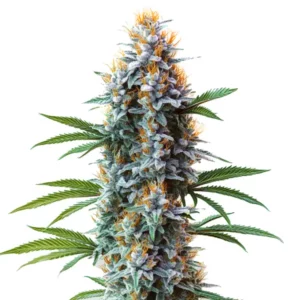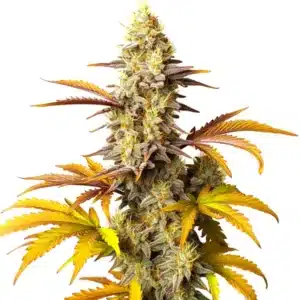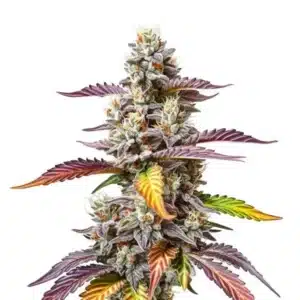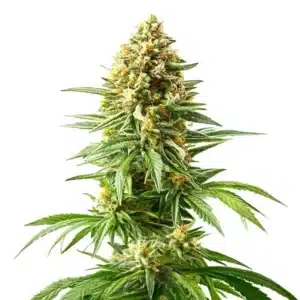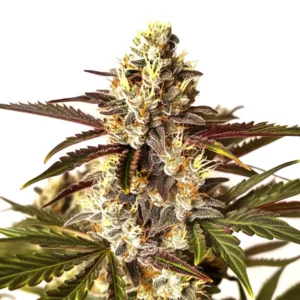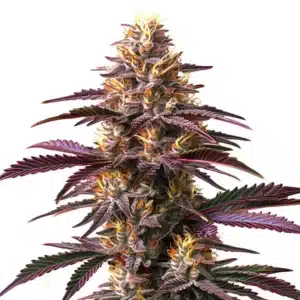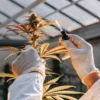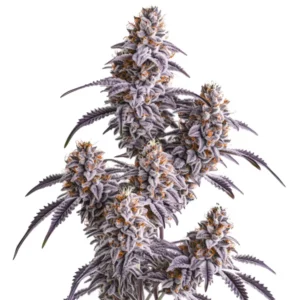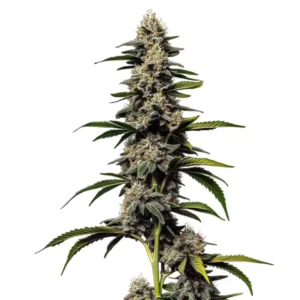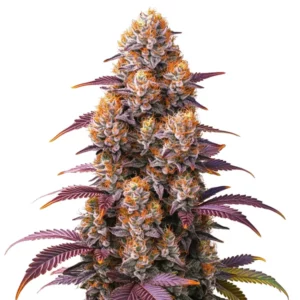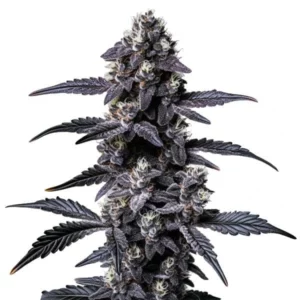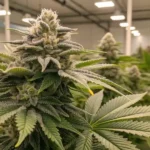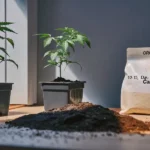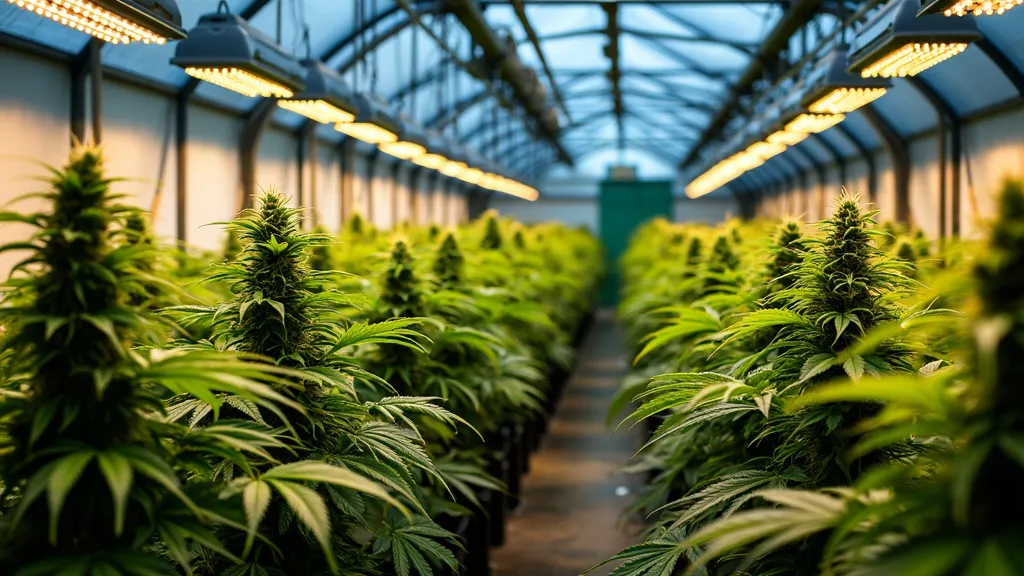
Greenhouse Grow Lights: Optimizing Your Cannabis Growth
Greenhouse growing has become a popular method for cultivating cannabis, combining the advantages of natural sunlight with the control offered by indoor growing environments. However, depending on the season and location, natural light alone might not provide the consistent, high-quality lighting cannabis plants need to thrive. That’s where greenhouse grow lights come in, helping ensure that plants receive the right amount of light to produce healthy yields. This article explores how to optimize your cannabis greenhouse setup by integrating grow lights, discussing different types of lights, their benefits, and how to use them effectively.
The importance of light in cannabis cultivation cannot be overstated. Light is the main driver of photosynthesis, the process by which plants convert light energy into chemical energy to fuel growth. In a greenhouse, growers can take advantage of natural sunlight, but even in the best conditions, supplemental lighting is necessary to provide consistent light quality and intensity throughout the day and night. By incorporating grow lights, greenhouse growers can extend the growing season, ensure proper plant development, and avoid issues caused by inadequate lighting.
Recommended Strains
Blue Cheese
|
|
THC | 16% - 20% (Medium) |
|
|
Type | Feminized |
|
|
Yield | High |
|
|
Phenotype | 80% Indica / 20% Sativa |
Blue Cheese Autoflower
|
|
THC | 14% - 16% (Medium) |
|
|
Type | Autoflowering |
|
|
Yield | Medium |
|
|
Phenotype | 80% Indica / 20% Sativa |
Additionally, the ability to control light cycles in a greenhouse allows for more flexibility in managing plant growth. Growers can manipulate the timing and intensity of light to trigger different stages of cannabis development, from vegetative growth to flowering. This gives them a level of control that is similar to indoor growing while still benefiting from the natural advantages of a greenhouse. As a result, greenhouse grow lights are essential for achieving high-quality, consistent yields in any cannabis operation.
Why Use Grow Lights in a Greenhouse?
Greenhouses are typically designed to maximize the use of natural sunlight. However, there are several reasons why additional lighting is essential:
- Seasonal Changes: As the seasons change, sunlight intensity and duration fluctuate. During winter or cloudy periods, supplemental lighting ensures plants continue growing optimally.
- Control Over Growth Cycles: Cannabis plants have specific light needs at different stages of growth. Grow lights allow you to regulate these light cycles more precisely than relying solely on natural light.
- Enhanced Yield: When properly used, grow lights can boost photosynthesis, leading to larger, healthier plants and increased yields.
In addition to these factors, environmental challenges such as cloudy days, shorter daylight hours during winter, and geographical location can all contribute to inconsistent light exposure for cannabis plants. Without supplemental lighting, plants may suffer from stunted growth, delayed flowering, or even reduced potency in their final yields. Using grow lights ensures that your plants maintain a consistent light source, no matter what external conditions are present.
Moreover, using supplemental grow lights can extend the growing season in regions with shorter summers. In northern climates, where sunlight may be limited, especially during the spring and fall, grow lights can fill in the gaps to help cannabis plants reach their full potential. For growers aiming to produce multiple harvests a year, managing light cycles with grow lights becomes an indispensable part of the cultivation process.
Promos & Deals
Types of Greenhouse Grow Lights
Several types of grow lights are suitable for greenhouse cannabis cultivation. Each type has its unique benefits and drawbacks, depending on your specific needs.
High-Pressure Sodium (HPS) Lights
HPS lights are one of the most popular lighting choices for greenhouse cultivation due to their intense output. These lights emit a warm, yellow light that mimics the spectrum of the sun during late summer or early fall. This makes them excellent for the flowering stage of cannabis plants.
- Advantages: HPS lights are known for their high efficiency in promoting flowering and producing larger yields. They are relatively cost-effective compared to other light sources.
- Disadvantages: They tend to produce significant heat, which could raise greenhouse temperatures. This may require additional cooling systems.
HPS lights are best suited for experienced growers who have the resources to manage the heat output effectively. They work well in larger greenhouses where space is not an issue, and there is adequate ventilation to counteract the heat. For smaller setups, the heat generated by HPS lights may pose a challenge, but in larger greenhouses, they are highly efficient and reliable for maximizing yield during the flowering stage.
It’s also worth noting that while HPS lights excel during the flowering stage, they are not ideal for the vegetative stage, as their spectrum is more suited to promoting bud development rather than leafy growth. This means that HPS lights are often used in conjunction with other types of lighting, such as metal halide or LED, to provide the full spectrum of light needed for all stages of plant growth.
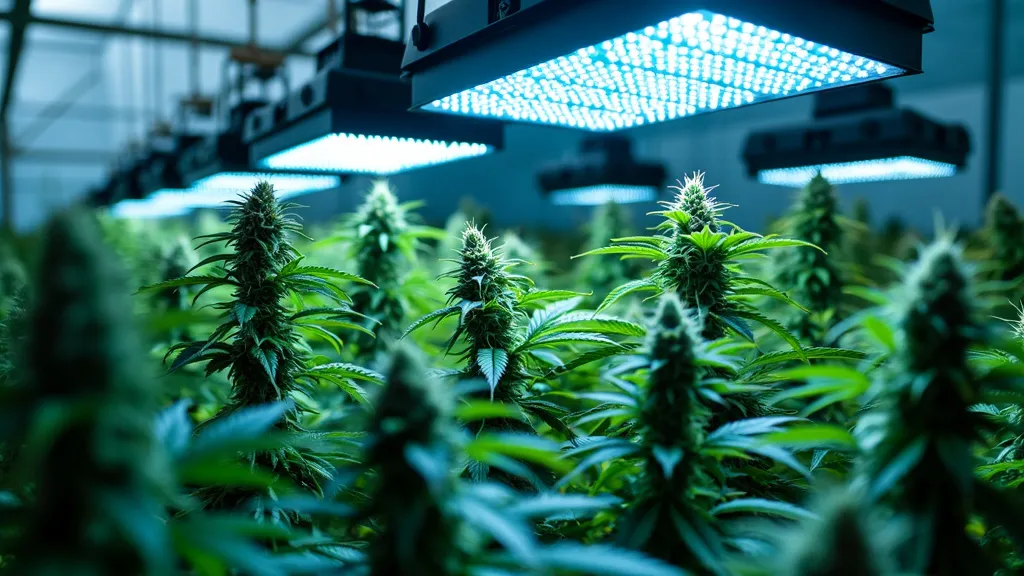
Light Emitting Diodes (LEDs)
LEDs have rapidly gained popularity in recent years due to their energy efficiency and adaptability. These lights are available in various spectrums, allowing growers to choose specific wavelengths for different stages of growth.
- Advantages: LEDs produce less heat than HPS lights, reducing the need for extensive cooling systems. They also offer a full spectrum of light, allowing for more precise control over plant growth.
- Disadvantages: The initial cost of LEDs can be higher, but their long-term energy savings often make them a worthwhile investment.
One of the greatest advantages of LED lighting is the ability to customize the light spectrum according to the specific needs of the cannabis plant at any given stage. For example, LEDs can emit more blue light during the vegetative stage and more red light during the flowering stage, which can boost plant health and productivity. Additionally, LED lights have a much longer lifespan than other types of lights, often lasting for tens of thousands of hours, reducing maintenance costs.
LEDs are also extremely versatile and can be used in both small and large greenhouse setups. Their low heat output makes them ideal for smaller spaces or for use in climates where managing greenhouse temperatures is a concern. While the upfront investment can be higher, the long-term energy savings and reduced maintenance costs often make LEDs the most economical choice over time.
Metal Halide (MH) Lights
Metal halide lights are often used during the vegetative stage of cannabis growth due to their cool, blue light spectrum. This light closely mimics the natural light of spring and early summer, which encourages leafy growth.
- Advantages: Metal halide lights are effective for early-stage growth and help develop strong, healthy plants.
- Disadvantages: Similar to HPS lights, they generate significant heat and may increase your greenhouse’s cooling requirements.
Metal halide lights excel during the vegetative phase by promoting strong stem and leaf growth. This early development is crucial for the plant’s overall health and ability to produce abundant buds later in the growing process. The blue light emitted by metal halides closely replicates the sunlight of early summer, which encourages dense, compact plants with robust structures capable of supporting large flowers during the flowering phase.
However, similar to HPS lights, the heat generated by metal halide bulbs requires proper ventilation and cooling systems to maintain optimal greenhouse conditions. Excessive heat can stress plants, leading to issues such as heat burn or water evaporation, which can ultimately affect plant growth and productivity. Despite these challenges, metal halide lights remain a reliable choice for greenhouse growers focused on achieving healthy, vegetative cannabis plants.
Fluorescent Lights
Fluorescent lights, particularly T5 bulbs, are another option for greenhouse growers. These lights are generally used for seedlings or clones due to their lower intensity.
- Advantages: Fluorescent lights are affordable, consume less energy, and produce minimal heat. They’re great for young plants.
- Disadvantages: They lack the intensity required for larger plants or later stages of growth, making them less ideal for a full-cycle grow.
Fluorescent lighting is particularly well-suited to nurturing seedlings, clones, and early-stage vegetative plants. The low-intensity light helps prevent young plants from becoming overwhelmed by excessive light, which can stunt growth or cause damage to delicate leaves. Additionally, fluorescent lights are cost-effective and easy to install, making them an attractive option for growers just starting in the cannabis cultivation process.
However, for more mature plants or during the flowering stage, fluorescent lights do not provide the intensity needed to support full plant development. As a result, they are typically used in conjunction with other lighting systems, such as HPS or LED lights, which can take over as the plants grow larger and enter the more demanding stages of their lifecycle.
Determining Light Requirements for Cannabis
To determine the right amount of light for your greenhouse, several factors need to be considered, such as the size of your greenhouse, the type of cannabis strains you’re growing, and the growth stage of your plants. Light intensity is measured in lumens or PAR (Photosynthetically Active Radiation), which measures the amount of light usable by plants for photosynthesis.
Vegetative Stage Lighting
During the vegetative stage, cannabis plants require 16 to 18 hours of light per day. The light should have a cooler spectrum, between 4000K and 6000K, to encourage strong growth and prevent plants from becoming too leggy.
Proper lighting during the vegetative stage is essential for building a strong foundation for your plants. Insufficient light during this stage can lead to weak, spindly plants that may struggle to support heavy buds during the flowering stage. Cool spectrum lighting, such as that provided by metal halide or certain LED lights, promotes healthy leaf and stem development, which are critical for overall plant health.
In a greenhouse setting, natural light can often provide much of the necessary illumination during the vegetative stage, but supplemental lighting is still important during cloudy days or in the early morning and late afternoon when natural light levels are lower. By ensuring your plants receive the right amount and type of light during this stage, you’ll set them up for success as they transition into flowering.
Flowering Stage Lighting
As cannabis enters the flowering stage, the light cycle should shift to 12 hours of light and 12 hours of darkness. During this stage, a warmer light spectrum between 2700K and 3000K is ideal for promoting flowering and enhancing bud development.
Flowering is the most critical stage in cannabis cultivation, as it directly impacts the quantity and quality of the final product. The introduction of a warm spectrum light simulates the natural light of late summer and early autumn, which signals to the cannabis plant that it’s time to begin producing flowers. Supplemental lighting during this stage can help ensure that plants receive the consistent light they need to maximize flower production.
In addition to adjusting the light spectrum, managing the light cycle is key during flowering. Any interruptions to the dark cycle can cause plants to revert to vegetative growth or develop hermaphroditic traits, which can negatively impact yields. Ensuring that your supplemental lights are timed correctly and that there are no light leaks in the greenhouse during the dark period is essential for a successful flowering stage.
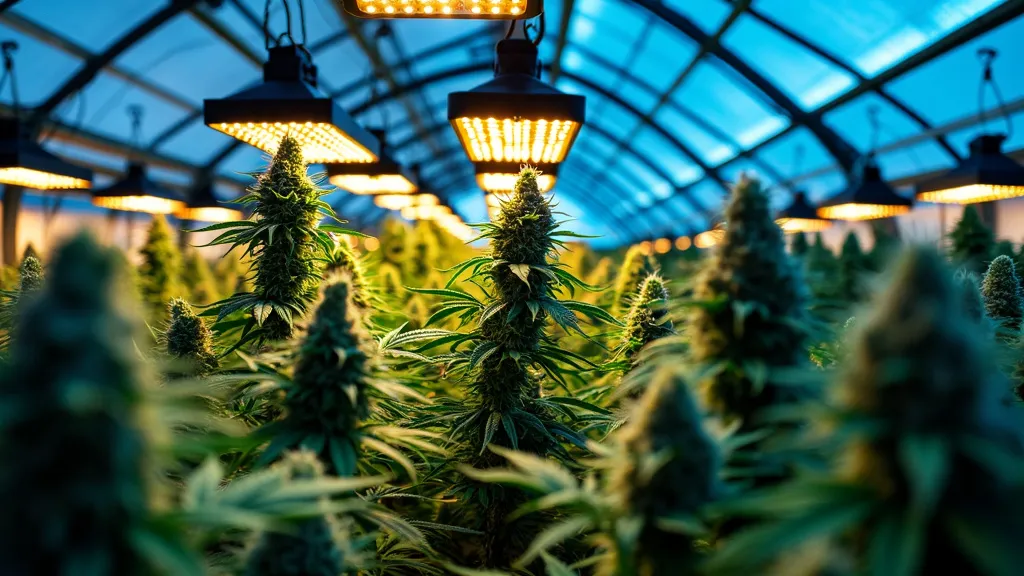
Balancing Natural and Artificial Light in a Greenhouse
The key to using grow lights effectively in a greenhouse is finding the right balance between natural and artificial light. Depending on the location and time of year, natural sunlight may provide most of the light cannabis plants need, but supplemental lighting will still be necessary to fill in the gaps. Here are some tips to help you achieve that balance:
- Monitor Natural Light Levels: Use light meters to measure the intensity of natural sunlight in your greenhouse throughout the day. This will help you determine when to use supplemental lighting.
- Supplement During Cloudy Days: Even in summer, cloudy days can reduce the amount of sunlight your plants receive. Grow lights can make up for this deficiency and ensure consistent growth.
- Extend Light Cycles in Winter: During the winter months, when days are shorter, supplemental lights can extend the daylight period to match the requirements of your plants.
- Reduce Supplemental Light During Peak Sunlight: When the sun is providing enough light, you can reduce the use of artificial lights to save on energy costs.
A critical aspect of balancing natural and artificial light is understanding the light needs of your specific cannabis strains. Some strains may be more tolerant of lower light levels, while others may require more intense lighting to achieve their full potential. By tracking how your plants respond to different light levels, you can adjust your grow lights accordingly to optimize plant health and productivity.
Another factor to consider is the geographical location of your greenhouse. In regions with long summer days, you may be able to rely more heavily on natural sunlight, while in northern or cloudier climates, supplemental lighting will play a more significant role in maintaining healthy plant growth. By regularly monitoring light levels and adjusting your lighting strategy as needed, you can ensure your plants receive consistent and optimal light exposure throughout their lifecycle.
Positioning Grow Lights in Your Greenhouse
Where and how you position your grow lights in the greenhouse is just as important as choosing the right type of light. Proper placement ensures that all plants receive an even distribution of light, which is critical for consistent growth.
Light Height and Spacing
To prevent burning your plants, grow lights should be hung at an appropriate height. For instance, HPS and MH lights should generally be placed 18 to 24 inches above the canopy, while LEDs can often be placed closer due to their lower heat output.
The height of the lights is important because it affects both the intensity of the light reaching the plants and the coverage area. Lights that are too close to the plants can cause heat stress and light burn, damaging leaves and flowers. On the other hand, lights that are too far away may not provide sufficient intensity for photosynthesis, leading to slower growth or lower yields. Adjusting light height throughout the growing cycle is often necessary to maintain the optimal distance as plants grow taller.
In addition to adjusting height, spacing between lights is another key consideration. Properly spaced lights ensure that all plants receive equal light exposure, preventing uneven growth or underdeveloped areas in the greenhouse. Reflective materials on the walls and ceilings of your greenhouse can also help distribute light more evenly, maximizing the efficiency of your grow lights.
Light Coverage
Ensure your grow lights cover the entire growing area. For larger greenhouses, multiple lights may be necessary to cover all plants adequately. Most grow lights have a recommended coverage area, so take that into consideration when planning your layout.
Light coverage is particularly important in larger greenhouses, where a single light source may not be sufficient to provide consistent illumination across the entire growing space. To avoid dark spots or uneven growth, it’s essential to install enough lights to cover the entire canopy. Depending on the size and layout of your greenhouse, you may need to use multiple light fixtures to achieve full coverage.
Using a combination of overhead lighting and side lighting can also help ensure that all parts of the plants receive adequate light. This is especially useful in dense grow setups where the lower parts of the plants may not receive enough light from overhead sources alone. Side lighting can help increase light penetration and encourage more uniform growth throughout the plant.
Energy Efficiency and Cost Management
While grow lights can improve your cannabis yields, they also consume a significant amount of energy. Managing energy consumption efficiently is essential to keeping costs under control.
Invest in Timers and Automation
Timers and automation systems can help reduce energy usage by ensuring that lights are only on when needed. These systems also allow for precise control over light cycles, which is especially important during the flowering stage.
Automation systems can help streamline the entire growing process by regulating light cycles, adjusting temperatures, and even controlling humidity levels. By using automation, growers can reduce the risk of human error, such as forgetting to turn off the lights or disrupting the dark cycle during flowering. Automation also allows for better energy management by ensuring that lights are only in use when necessary, reducing overall energy consumption.
In addition to automation, energy-efficient practices such as staggering light cycles or using off-peak electricity hours can further reduce energy costs. By carefully planning your light schedules and taking advantage of available technology, you can optimize energy use while still maintaining optimal light levels for your plants.
Choose Energy-Efficient Lights
Although the initial cost of LED lights may be higher, they are significantly more energy-efficient than HPS or MH lights, making them a cost-effective option in the long run. Additionally, LEDs tend to last longer, reducing the need for frequent replacements.
One of the main benefits of using energy-efficient lights is the reduction in electricity costs. LED lights, in particular, can use up to 50% less energy than traditional HPS or MH lights, which translates into significant savings over the course of a growing season. Furthermore, the lower heat output of LEDs means less reliance on cooling systems, further reducing energy consumption.
When choosing grow lights for your greenhouse, it’s important to consider not only the initial purchase price but also the long-term energy savings. While LEDs may require a larger upfront investment, their energy efficiency, long lifespan, and reduced cooling requirements often make them the more cost-effective choice over time.
FAQs about Greenhouse Grow Lights
How many hours of supplemental light do cannabis plants need in a greenhouse?
Cannabis plants typically need 16 to 18 hours of light during the vegetative stage and 12 hours during the flowering stage. Depending on the amount of natural light available, you may need to supplement for a few hours daily, particularly in winter.
During the vegetative stage, cannabis plants require long light periods to encourage robust growth. If your greenhouse is located in a region with shorter daylight hours or inconsistent sunlight, providing supplemental light during the morning and evening hours can help maintain the necessary light levels. In the flowering stage, the 12-hour light cycle is crucial to trigger the production of buds, and interruptions to this cycle can disrupt flowering.
The amount of supplemental light needed will depend on factors such as geographic location, time of year, and the specific strain being grown. Regularly monitoring light levels with a light meter can help you determine when supplemental lighting is necessary and how many hours per day to provide additional light.
Can I use any type of grow light for a greenhouse?
Not all grow lights are suitable for greenhouses. While you can use HPS, MH, and LED lights, it’s essential to choose the correct light spectrum for the plant’s growth stage and manage the heat produced by the lights.
Different grow lights offer various spectrums and intensities, which can affect the growth and health of cannabis plants. For example, metal halide lights are better suited to the vegetative stage, while high-pressure sodium lights work well during the flowering stage. LEDs offer versatility, with the ability to adjust the light spectrum as needed throughout the growing cycle.
In addition to selecting the appropriate light spectrum, it’s also important to consider the heat output of your grow lights. Excessive heat can cause stress to cannabis plants, leading to issues such as leaf burn, nutrient deficiencies, or reduced yields. Proper ventilation, cooling systems, and light positioning are critical to managing the heat generated by your grow lights.
Is it possible to rely solely on natural light in a greenhouse?
In some regions with plenty of sunlight year-round, relying solely on natural light is possible. However, in most cases, supplemental lighting will be necessary to ensure plants receive the optimal amount of light, particularly during cloudy weather or shorter winter days.
Natural light can be sufficient for cannabis growth in locations with long summer days and consistent sunlight. However, even in these regions, there are periods of the year when natural light alone may not provide the intensity or duration needed for optimal growth. In these cases, supplemental grow lights can help fill in the gaps, ensuring your plants continue to thrive even during less favorable weather conditions.
Relying solely on natural light can be a cost-effective option, but it also comes with risks, such as inconsistent light levels, which can affect plant health and yield. By integrating supplemental lighting into your greenhouse, you can maintain control over the growing environment and avoid potential issues caused by fluctuations in natural light.
Do grow lights increase the temperature inside the greenhouse?
Yes, many grow lights, particularly HPS and MH lights, produce a significant amount of heat. It’s essential to monitor the temperature in your greenhouse and install adequate ventilation to avoid overheating.
The heat generated by grow lights can be both a benefit and a challenge. In cooler climates or during colder months, the heat from grow lights can help maintain optimal temperatures inside the greenhouse. However, in warmer climates or during summer, the additional heat may require extra ventilation, fans, or cooling systems to prevent the greenhouse from becoming too hot.
Managing temperature and humidity levels in the greenhouse is essential for maintaining a healthy growing environment. By using a combination of grow lights, ventilation, and environmental controls, you can create the ideal conditions for your cannabis plants, ensuring they receive the light and climate they need to thrive.


